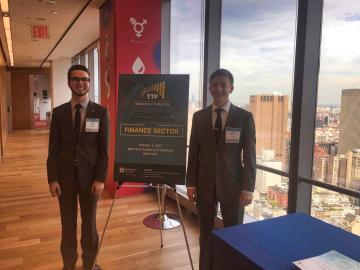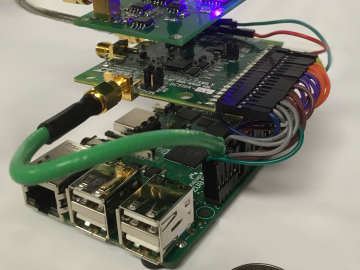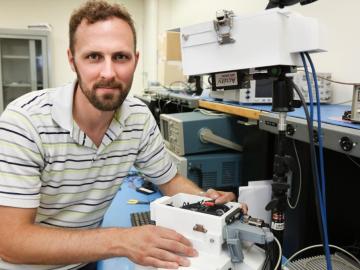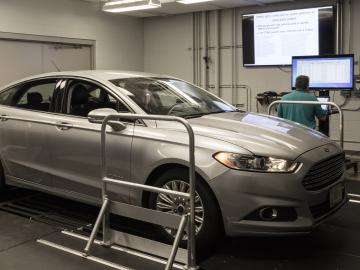
Filter News
Area of Research
- Advanced Manufacturing (9)
- Biology and Environment (6)
- Building Technologies (1)
- Computer Science (3)
- Electricity and Smart Grid (1)
- Energy Science (40)
- Fusion and Fission (3)
- Materials (9)
- Materials for Computing (4)
- National Security (3)
- Neutron Science (4)
- Nuclear Science and Technology (1)
- Quantum information Science (3)
- Sensors and Controls (1)
- Supercomputing (8)
News Topics
- (-) 3-D Printing/Advanced Manufacturing (32)
- (-) Advanced Reactors (3)
- (-) Composites (10)
- (-) Cybersecurity (10)
- (-) Grid (13)
- (-) Mercury (5)
- (-) Quantum Science (15)
- Artificial Intelligence (9)
- Big Data (8)
- Bioenergy (17)
- Biology (26)
- Biomedical (15)
- Biotechnology (5)
- Buildings (13)
- Chemical Sciences (7)
- Clean Water (9)
- Computer Science (50)
- Coronavirus (10)
- Critical Materials (5)
- Energy Storage (24)
- Environment (46)
- Exascale Computing (3)
- Frontier (4)
- Fusion (13)
- High-Performance Computing (19)
- Isotopes (18)
- ITER (4)
- Machine Learning (1)
- Materials (32)
- Materials Science (34)
- Mathematics (1)
- Microscopy (16)
- Molten Salt (4)
- Nanotechnology (19)
- National Security (7)
- Neutron Science (33)
- Nuclear Energy (16)
- Physics (14)
- Polymers (10)
- Quantum Computing (5)
- Security (10)
- Space Exploration (6)
- Statistics (1)
- Summit (11)
- Transportation (30)
Media Contacts

As technology continues to evolve, cybersecurity threats do as well. To better safeguard digital information, a team of researchers at the US Department of Energy’s (DOE’s) Oak Ridge National Laboratory (ORNL) has developed Akatosh, a security analysis tool that works in conjunctio...

Qrypt, Inc., has exclusively licensed a novel cyber security technology from the Department of Energy’s Oak Ridge National Laboratory, promising a stronger defense against cyberattacks including those posed by quantum computing.

The construction industry may soon benefit from 3D printed molds to make concrete facades, promising lower cost and production time. Researchers at Oak Ridge National Laboratory are evaluating the performance of 3D printed molds used to precast concrete facades in a 42-story buildin...

Oak Ridge National Laboratory scientists have improved a mixture of materials used to 3D print permanent magnets with increased density, which could yield longer lasting, better performing magnets for electric motors, sensors and vehicle applications. Building on previous research, ...

Oak Ridge National Laboratory scientists have developed a crucial component for a new kind of low-cost stationary battery system utilizing common materials and designed for grid-scale electricity storage. Large, economical electricity storage systems can benefit the nation’s grid ...

As leader of the RF, Communications, and Cyber-Physical Security Group at Oak Ridge National Laboratory, Kerekes heads an accelerated lab-directed research program to build virtual models of critical infrastructure systems like the power grid that can be used to develop ways to detect and repel cyber-intrusion and to make the network resilient when disruption occurs.

Scientists at the Department of Energy’s Oak Ridge National Laboratory are the first to successfully simulate an atomic nucleus using a quantum computer. The results, published in Physical Review Letters, demonstrate the ability of quantum systems to compute nuclear ph...

Raman. Heisenberg. Fermi. Wollan. From Kolkata to Göttingen, Chicago to Oak Ridge. Arnab Banerjee has literally walked in the footsteps of some of the greatest pioneers in physics history—and he’s forging his own trail along the way. Banerjee is a staff scientist working in the Neu...

Vlastimil Kunc grew up in a family of scientists where his natural curiosity was encouraged—an experience that continues to drive his research today in polymer composite additive manufacturing at Oak Ridge National Laboratory. “I’ve been interested in the science of composites si...

A new Oak Ridge National Laboratory-developed method promises to protect connected and autonomous vehicles from possible network intrusion. Researchers built a prototype plug-in device designed to alert drivers of vehicle cyberattacks. The prototype is coded to learn regular timing...


